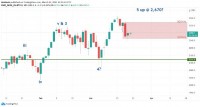|
Our author is Alan Rohrbach, president and chief analyst of capital markets consultants Rohr International Inc. Long a proponent of an approach that recognizes broad cyclical trends, here he revisits the idea that trend analysis offers advantages for understanding markets in the super-cycle correction we're currently living through. This updates his article in the May 5th, 2009, issue of Opalesque Futures Intelligence. Mr. Rohrbach started his career on the Chicago Mercantile Exchange and has taught the exchange's technical analysis course. He has published the Rohr Report, read by portfolio managers and dealers as well as corporate financial managers, for over 25 years. Incorporating fundamental analysis and technical projections into a broad macro focus, he analyses trends in major financial markets along with energy and gold. Super-Cycle Next Stage Market activity in the past couple of months has confirmed that managers need to master a the very different pattern of trend activity. Current markets tend toward stop-start volatility shifts, with extreme moves once a trend gathers momentum. That is an increasingly different sort of beast than anything encountered in the market jungle from the 1990's Great Moderation through mid-2007. Everyone from market modelers to options strategists to classical long-only portfolio managers now appreciate that. In essence, we have a return to late-1970's- through 1980's-style trends that hibernated during the 1990's. Government 'fixes' for economic woes will only exacerbate volatility rotation through asset classes, with extreme volatility alternating with confusion-bred quietude. Yet, these seemingly erratic phases offer excellent opportunities to those who understand the shifts and, especially, how to manage the risks. I don't want to get into detailed technical analysis but some review of major trend evolution is necessary. Despite the wails of “How could we have known what was coming in 2008,” there were straightforward developments, the analysis of which remains very useful in the current environment. The updated DJIA monthly range trend in Chart 1 shows an impressive recovery from the March 2009 low. Yet, it has still not reached the 10,000-9,700 area major failure below Channel A trend support from the 1974 low. From a macro view, this can be seen as a failure of the long-term fundamental economic growth cycle in place since the mid-1970s. That would be consistent with the sort of recovery that might still leave equities back under more pressure than many participants think likely. But the real lesson for current tendencies requires an intermediate term focus. For that we explore DJIA (weekly range) trend evolution in Chart 2. First of all, the June 2008 failure below the January 2008 low and subsequent inability to recover back into the higher range is classic bearish activity. And if a trend is maintained long enough, it will accelerate at some point. The October 2008 downward acceleration was vicious enough to both confirm and reinforce the massive 'fundamental' credit market dislocation. Higher volatility, interrupted by spells of eerie quietude, has been the pattern since then. After a quiet early year, the volatile swing below last November's 7,450 low was matched by an equally volatile and sustained recovery after that level was exceeded once again. And that alternation of quiet resting phases with volatile swings continued through May into July to an even greater degree. Of course, this confounds models or perceptions that rely upon consistent volatility. Beyond Short-Term Volatility What does it tell us? We're not talking about mere short-term trading volatility. Managers must be prepared for sustained trend volatility, even when it occurs in alternation with the most tediously quiet phases. That was most certainly the case out of the first week in July into what then transpired. The context of the super-cycle correction is a tendency for quiet consolidations to yield to rapid adjustments of 10% or more (indeed 12.5% in the past three weeks.) I previously argued that it is possible to use broad 'trend' insights of a cyclical nature and there are specific benefits from a well-rounded trend analysis. That applies equally to understanding the nature of the market environment in general as to any specific directional trend projection. Managers who appreciated that it was a bullish sign for DJIA to quickly recover above the November 2008 low after the sharp selloff into early March also likely knew that volatility would maintain as well. Consistent with that, those who understood the push above 8,200 Channel B resistance meant DJIA was capable of rallying further were not dissuaded by the quietude in May through early July. It is ironic this extended rally has only left DJIA up into the 9,100-9,200 next major decision around the early year high and Channel C resistance. Any push above it might quickly retest the major 9,700-10,000 previous down Break area, while slippage back below 8,800 congestion could easily retest 8,200-8,000. That's the next 10%+ adjustment either way. The further irony for the 'macro' view is the recent sharp equity rally was 'fundamentally' driven by broadly acknowledged 'poor quality' earnings. That has left the bond market buoyant in spite of recent heavy auctions. The last time bond markets rallied into new highs for equities was when traders anticipated the major equities top in October 2007. Taking that inference to its logical conclusion, one of these trends is misguided. Compared to 2007, we have different markets at greatly different price levels and a wholly different phase of the major cycle; yet likely this is an indication of continued instability. Managers had best be ready with all the weapons at their disposal. |
|
This article was published in Opalesque Futures Intelligence.
|





 RSS
RSS











